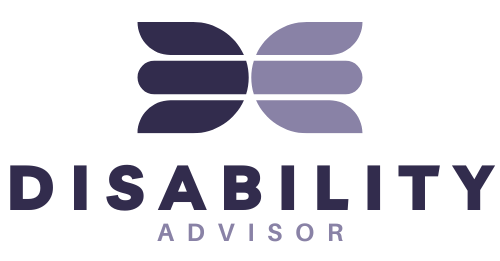If you invest in disability insurance, it will help replace lost income if you can’t work due to illness or injury.
You should be aware of the elimination period, which is when your policy will start paying out after you file a claim.
Here’s what you need to know about the elimination period for disability insurance.
Elimination Period for Disability Insurance

A disability insurance elimination period is the time you must wait before your insurer starts paying benefits.
These periods, also called waiting periods, typically range from 30 days to two years according to Policygenius.
The countdown begins from the date of your injury or diagnosis, not the date you file a claim.
During this period, you’re responsible for covering any medical costs.
Once the elimination period ends and if you file a valid claim, the insurance company will begin paying your benefits.
Impact on Disability Insurance Premiums
The length of the elimination period chosen for your disability insurance significantly affects the cost of your premiums.
Opting for a longer elimination period lowers the likelihood of filing a claim shortly after becoming disabled, thus decreasing the insurer’s risk.
As a result, policies with longer elimination periods come with lower premium rates.
Conversely, selecting a shorter elimination period increases the chances of filing a claim sooner, marking you as a higher risk for the insurance company.
Therefore, policies with shorter elimination periods usually require higher premium payments.
This relationship between the elimination period and premium costs is crucial when selecting a disability insurance policy, as it involves balancing the need for quicker benefits against the cost of coverage.
Types of Disability Insurance Elimination Periods

Here are the different elimination periods you might encounter when exploring disability insurance:
- 30 Days A 30-day elimination period is the shortest option and comes with the highest premiums. This might be your choice if you want coverage to start as soon as possible.
- 60 Days A 60-day elimination period is more affordable than a 30-day period but still has a relatively high cost. You might consider this if you want to avoid significant out-of-pocket expenses after a disability.
- 90 Days Many people find the 90-day elimination period to be a balance between coverage and cost. If you can wait three months to receive your first benefit, this might be a suitable option.
- 180 Days If you have enough savings to cover six months without income, you can save money with a 180-day elimination period. The premiums will be significantly lower than for shorter elimination periods.
- 365 Days Choosing a 365-day elimination period can secure you a very low premium. However, you might need to cover a substantial amount of disability-related medical expenses during this waiting period.
- 720 Days A 720-day elimination period offers the lowest premiums. However, waiting this long may lead to financial hardship due to expenses related to your injury or illness, so this option may not be practical.
Elimination Period vs. Probationary Period
Contrary to popular belief, an elimination period is not the same as a probationary period. A probationary period is the time between when your policy is issued and when you can start claiming benefits. This period helps protect insurers from fraudulent claims.
An elimination period, however, allows you to file a claim at any time, but benefits won’t be paid out until this period has expired. Most long-term disability plans have elimination periods but do not include probationary periods.
Selecting the Right Disability Elimination Period

When choosing a disability elimination period, consider the following factors:
Your Budget
Assess your budget carefully. If high premiums are not affordable, a longer elimination period might be suitable, though it means waiting longer for benefits. If you can manage higher premiums, a shorter elimination period may provide quicker access to benefits and greater peace of mind.
Your Dependents
If you have few or no dependents, a longer elimination period might help you save on premiums. However, if you have multiple dependents, your expenses are likely higher, making a shorter elimination period more practical to cover costs if you become disabled.
Your Savings
Evaluate your emergency fund. If you have substantial savings, a longer elimination period may be appropriate. Conversely, if you lack sufficient savings to cover 90 or 180 days without income, a shorter elimination period, despite higher premiums, might be necessary.
Example of How to Calculate Your Long-Term Disability Insurance Premium

To calculate your long-term disability insurance premium, follow these steps using your most recent Annual Salary. Note that your Annual Salary is based on your primary job only, excluding any additional appointments or task compensations.
Step 1: Find Your Annual Salary
- Log into Employee Self Service.
- Navigate to “Payroll & Compensation” and then “Compensation History” to find your Annual Salary.
Example: Annual Salary = $35,000
Step 2: Calculate Your Gross Monthly Salary
- Divide your Annual Salary by the number of months you are paid (12 months or 9 months).
Example for 12-month employee:
$35,000 / 12 = $2,916.67
Example for 9-month employee:
(Annual Salary) / (Number of Months Paid) = Gross Monthly Salary
Step 3: Calculate the Value for Premium Calculation
- Divide your Gross Monthly Salary by 100.
Example:
$2,916.67 / 100 = $29.17
Step 4: Calculate Your Monthly Premium Rate
- Multiply the value from Step 3 by the coverage rate of $0.63.
Example:
$29.17 x $0.63 = $18.38
Formula Recap:
- Annual Salary / (Number of Months Paid) = Gross Monthly Salary
- Gross Monthly Salary / 100 = Value
- Value x Coverage Rate ($0.63) = Monthly Premium Rate
Conclusion








